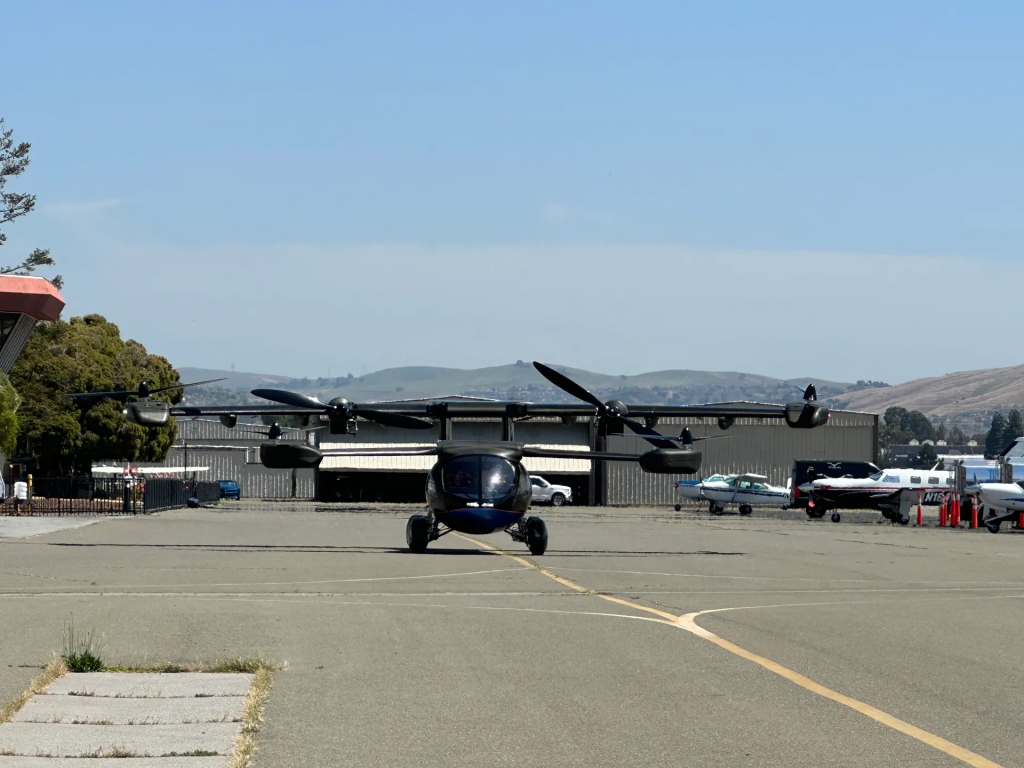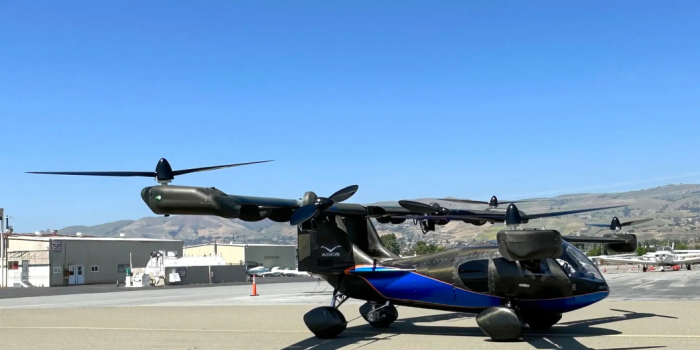Imagine a vehicle that effortlessly transforms from an SUV into a cutting-edge eVTOL aircraft with just the push of a button. Meet the Aska A5, a four-seat marvel that has been granted clearance by the FAA for flight testing. This groundbreaking creation is set to revolutionize the way we commute by seamlessly combining the functionalities of a car and an aircraft.
Back in the day, the year 2000 held promises of a future filled with flying cars and vertical commuting. While we may not have fully embraced the Jetsons’ lifestyle just yet, technological advancements have paved the way for innovative solutions like the Aska A5. This extraordinary vehicle goes beyond the conventional notion of a flying car, featuring four wheels, four seats, and a transformative design that allows it to take flight with electric propellers at a moment’s notice.

Unlike other flying car projects that struggle to strike a balance between automotive and aircraft safety testing, the Aska A5 boldly defies the norm. With the ability to perform vertical takeoff and land on a short runway or even no runway at all, it stands out as a true hybrid marvel. Moreover, it is capable of transitioning to a winged cruise mode, unlocking an extended range and enhanced efficiency that sets it apart from its counterparts.
At first glance, the Aska A5’s appearance may seem eccentric, resembling a clog piled high with cutlery due to its array of propellers and struts. However, the vehicle’s design becomes perfectly logical once its rear wing and canard unfurl. Equipped with six large propellers, four at the back and two at the front, it gracefully lifts off the ground, enabling vertical hovering during VTOL operations. For forward flight, the two inner rear propellers tilt forward, propelling the A5 horizontally while the remaining propellers remain idle, allowing the wings to bear the vehicle’s weight.

The Aska A5 doesn’t shy away from pushing boundaries, boasting a sophisticated VTOL system with tilting propellers surpassing most personal eVTOLs’ complexity. Its foldable front and rear wings and self-deploying mechanism showcase its exceptional engineering.
Furthermore, the inclusion of electric motors in the wheels provides exhilarating acceleration, propelling the A5 from zero to 65 mph (105 km/h) in less than five seconds. Safety measures are not overlooked either, as the vehicle comes equipped with a ballistic parachute and a gasoline range extender to ensure continuous power supply. With a maximum flight range of 250 miles (402 km) and the ability to reach airspeeds of up to 150 mph (240 km/h), the Aska A5 leaves no room for doubt about its impressive capabilities.
The Aska team’s ambitious efforts have already borne fruit, with a fully functional prototype already in existence. Securing both a Special Airworthiness Certification and a Certificate of Authorization from the FAA demonstrates the vehicle’s adherence to safety standards, allowing for limited flight test scenarios. While these certifications do not grant permission to sell the A5 as a fully approved aircraft, they indicate its reliability.
Taking the next step towards full FAA type certification, Aska aims to achieve G1 status, which would signify a significant milestone in its journey. While challenges remain, such as ensuring compliance with road regulations and obtaining images of the vehicle in flight, the company’s substantial pre-order sales exceeding $50 million signify an enthusiastic market response.

Aska sees the A5’s $789,000 price tag not as a steep cost but as an opportunity to embrace an affordable countryside lifestyle, where flying into urban centers can be quicker than enduring traffic congestion. However, it’s important to note that landing at designated airports or helipads will still be necessary, implying that traffic may not be eliminated.
While the A5’s journey towards full dual certification as an aircraft and a car is not without hurdles, its potential to reshape our understanding of transportation in the real world remains an exciting prospect.


